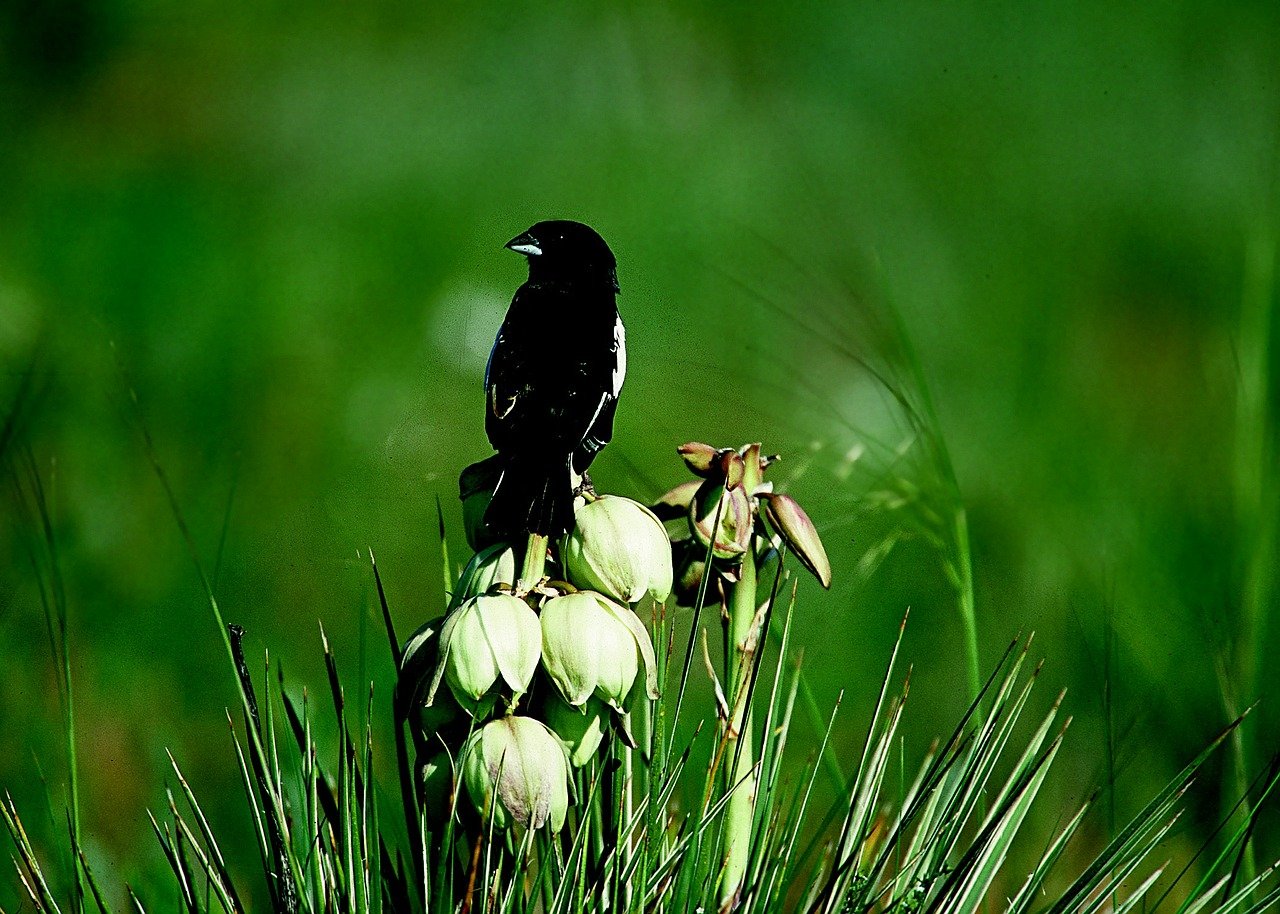
Colorado is unique in many respects, so it comes as no surprise that its residents went in a different direction when selecting their state bird. Unlike many other official birds, the Lark Bunting is not a year-round resident. Instead, they are summer visitors, moving up to Colorado in the warm months to breed before returning to wintering grounds in Texas, Arizona, New Mexico, and Mexico. Still, it’s not hard to see why the Colorado legislature couldn’t resist the Lark Bunting when they named it the official state bird in 1931: they are absolutely striking.
During the summer breeding months, Lark Bunting males – a sparrow species – are jet black, their white wings contrasting beautifully with the dark bodies. In fact, according to the Cornell Lab of Ornithology, “It is the only sparrow that changes completely out of a bright breeding plumage into a drab winter one.” Females have more typical brown and white sparrow markings, with dark streaking above and more streaking against a white stomach and chest.
Lark Buntings are prairie birds, and breed in open meadow, sagebrush, and plains. During the winter they still prefer open habitats, such as deserts, agricultural fields, and brushy areas. These buntings both feed and nest on the ground, usually building a loose bowl of vegetation under some type of scrub.
Though Partners in Flight estimates that their breeding population is over nine million birds, populations of Lark Buntings have steadily declined. Looking at the North American Breeding Survey, their numbers have decreased by 4.8% annually from 1966 to 2010, for a total of 89%. Given their dependence on grasslands, their population reduction is of little surprise. According to a project run by Colorado State University, “Grassland bird species have experienced the largest population declines of any terrestrial avian group in the past four decades in North America.”
As with other at-risk birds, state designation gives added publicity to environmental problems behind a species’ decline. For example, The Guardian, USA Today, Summit Daily, and more have all written stories mentioning the the bunting’s population dip. Hopefully greater focus on Lark Buntings and other grassland species will promote additional conservation measures and protect them from further population problems.











Leave a Comment